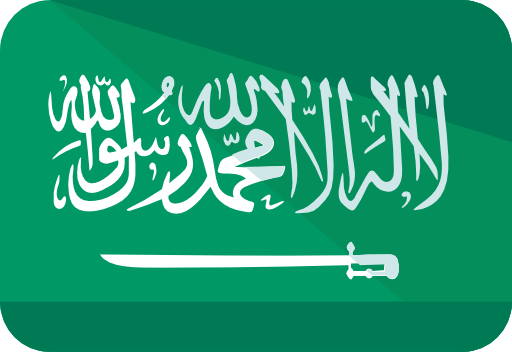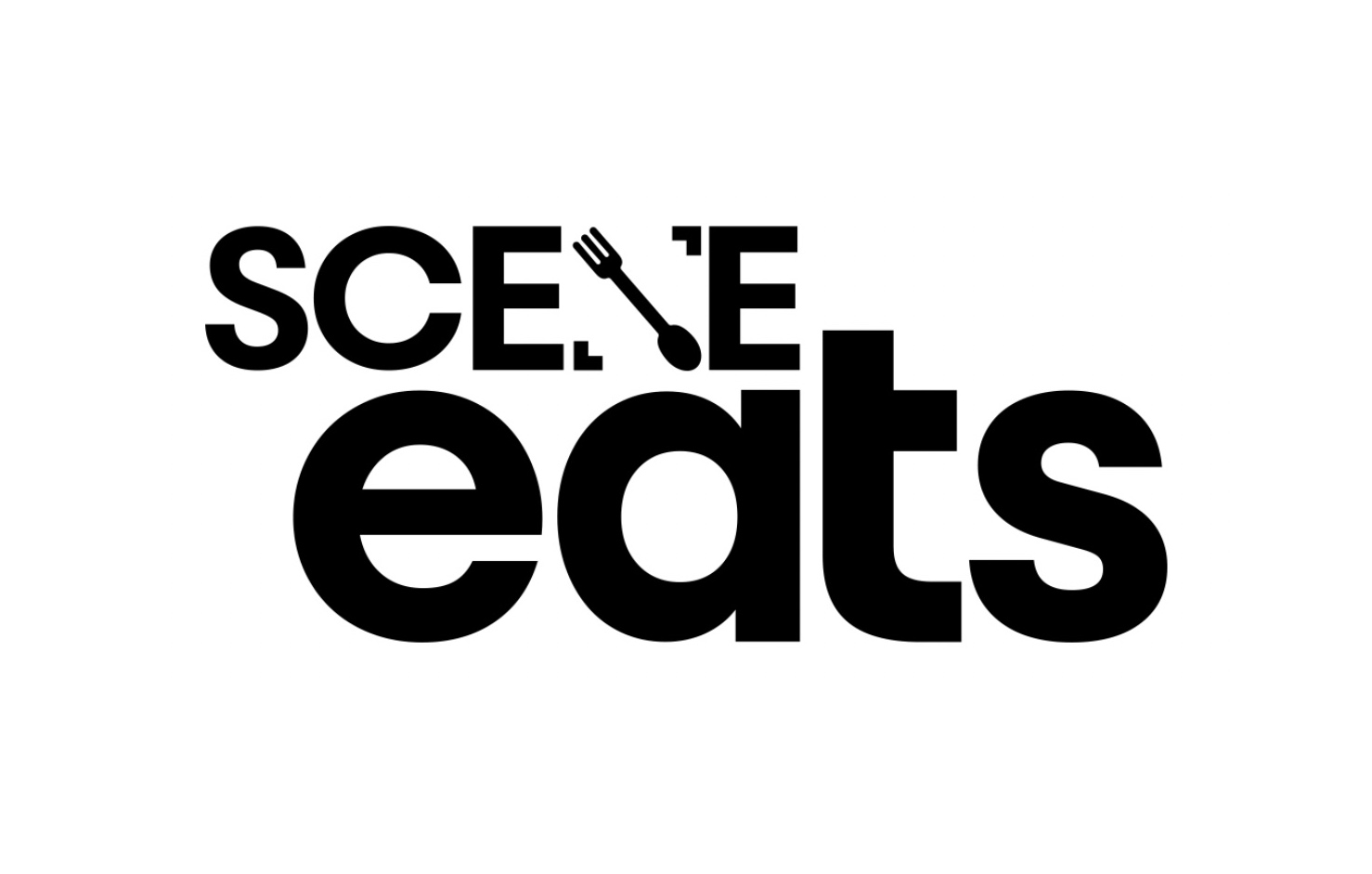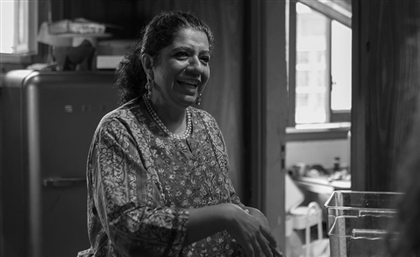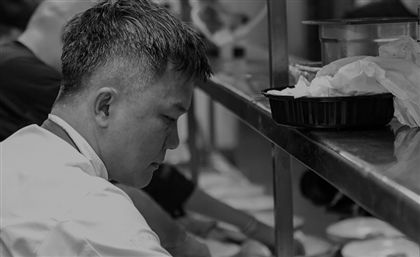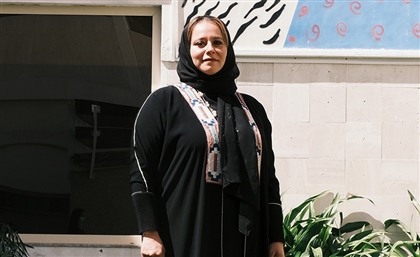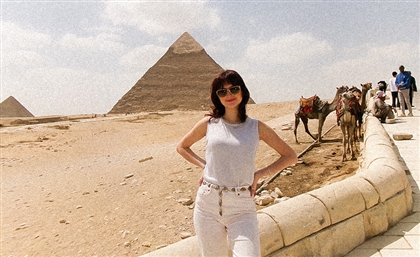At The King’s Feast The Nile Flows Through the Grand Egyptian Museum
The theme 'Between Two Banks' turned a dinner into a meditation on source and continuity.
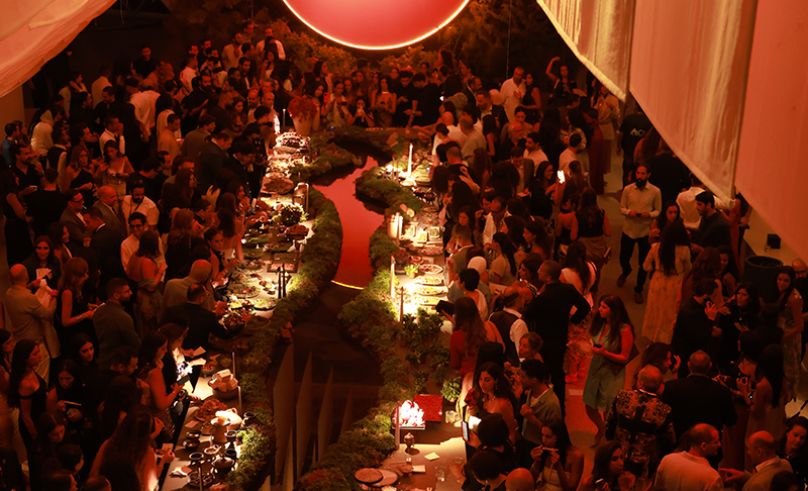
The Grand Egyptian Museum, cavernous and gleaming, became the stage for Cairo’s cultural cognoscenti as they gathered for the third edition of Cairo Food Week — Hoda El-Sherif and Sherif Tamim’s elaborate experiment in taste, design, and sensory theatre. At its centre was the King’s Feast, now in its third iteration. Sage, the culinary designers, staged the meal with an archivist’s lens. Citrus flayed to its core. Loaves piled like architecture. Figs slit open, their seeds winking under the museum’s floodlights. Every course arrived annotated: a herb from the Delta, a grain excavated from memory, flavours lined up like exhibits in a vitrine. Guests hesitated. They photographed. They reached. They chewed slowly. Bread breaking, salt pinched, fruit bitten — an ensemble cast of ingredients performing their lines.
Sage, the culinary designers, staged the meal with an archivist’s lens. Citrus flayed to its core. Loaves piled like architecture. Figs slit open, their seeds winking under the museum’s floodlights. Every course arrived annotated: a herb from the Delta, a grain excavated from memory, flavours lined up like exhibits in a vitrine. Guests hesitated. They photographed. They reached. They chewed slowly. Bread breaking, salt pinched, fruit bitten — an ensemble cast of ingredients performing their lines.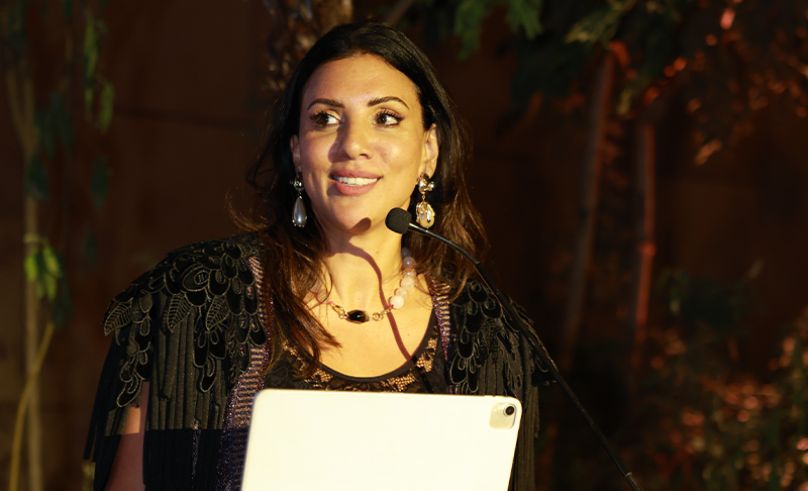 “Our purpose is simple and powerful,” El-Sherif tells the crowd. “It’s to shine the brightest light on our region — rich in resources, flavours, narratives, and pride. Our goal is not to entertain, but to inspire.”
“Our purpose is simple and powerful,” El-Sherif tells the crowd. “It’s to shine the brightest light on our region — rich in resources, flavours, narratives, and pride. Our goal is not to entertain, but to inspire.”
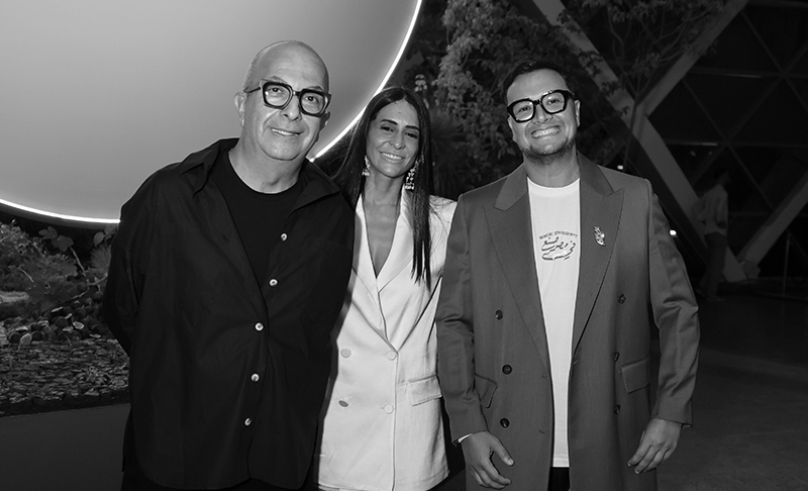 That purpose carried into the staging. Curated by the design collective Alchemy Experience — Karim Mekhtigian, Mohamed Fares, and Emy Hussein — the 2025 theme, Between Two Banks, reimagined the Nile inside the museum itself. Powered by Palm Hills’ Jirian, the installation transformed the expanse into a riverscape in stone and light, a meditation on the Nile as source, metaphor, and continuous line through the country’s story. Guests sat at its edge, waiting for the water to move.
That purpose carried into the staging. Curated by the design collective Alchemy Experience — Karim Mekhtigian, Mohamed Fares, and Emy Hussein — the 2025 theme, Between Two Banks, reimagined the Nile inside the museum itself. Powered by Palm Hills’ Jirian, the installation transformed the expanse into a riverscape in stone and light, a meditation on the Nile as source, metaphor, and continuous line through the country’s story. Guests sat at its edge, waiting for the water to move.
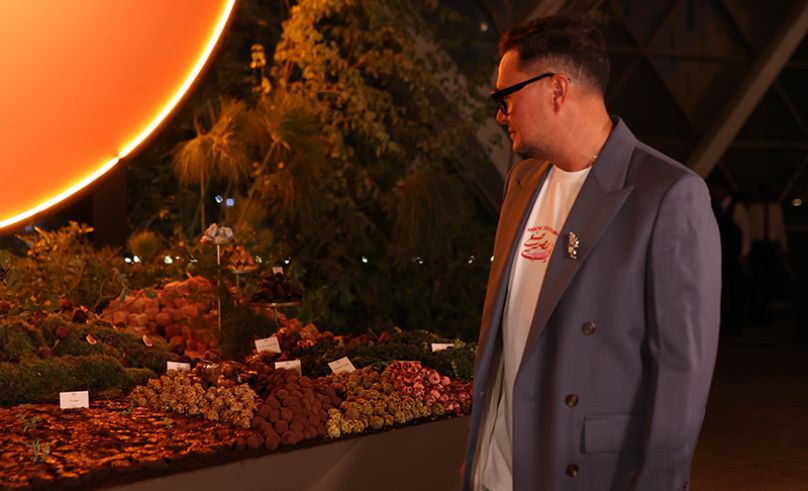 “Today, we're celebrating the power of unity, the power of Egyptians coming together with heart, passion, and purpose,” Fares explains. “From different creative practices, visions, and disciplines — we moved as one hand, one rhythm, one force. This is what happens when collaboration becomes a shared language.”
“Today, we're celebrating the power of unity, the power of Egyptians coming together with heart, passion, and purpose,” Fares explains. “From different creative practices, visions, and disciplines — we moved as one hand, one rhythm, one force. This is what happens when collaboration becomes a shared language.”
The environment reinforced the message. Egypt’s Noha Mohsen, founder of Enlighten, flooded the hall with a play of light and shadow that made the marble pulse, casting the museum’s vastness into shifting moods — dramatic one moment and intimate the next. It was the kind of glow that flatters both architecture and ego. Khaled El Wakil of Flower Bar staged installations — wild, sprawling re-imaginings of botanical gardens — that snaked between tables, branches and blooms blurring the line between nature and set design. Everywhere you looked, something flickered or bloomed, as though the museum itself had sprouted.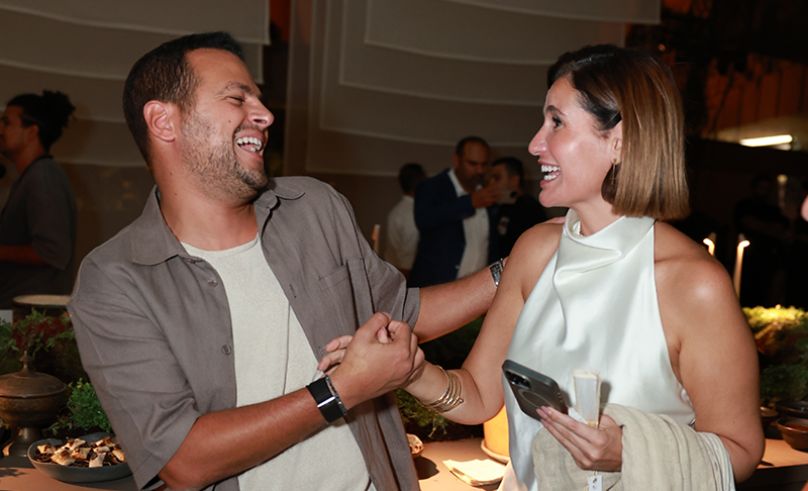 The audience, too, was part of the composition: designers, chefs, storytellers, cultural operators — each inhabiting the roles of architect, alchemist, narrator. The chaos was deliberate, the beauty unruly, the overall effect one of carefully staged bedlam.
The audience, too, was part of the composition: designers, chefs, storytellers, cultural operators — each inhabiting the roles of architect, alchemist, narrator. The chaos was deliberate, the beauty unruly, the overall effect one of carefully staged bedlam.
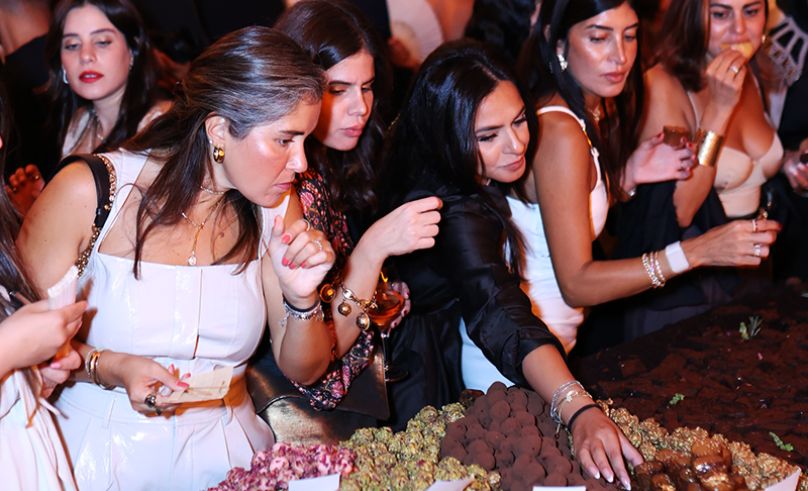 “What started as a dream just a few years ago has now grown into a movement, one that celebrates not only food but also the creativity, culture, and connections that it inspires,” Tamim adds. “Cairo has always been a city of stories, flavours, and encounters. Today, it stands as a meeting point for some of the most brilliant culinary minds from across the region and the world. Through this week, we are here to learn, to share, and to imagine new ways of bringing people together around the table.”
“What started as a dream just a few years ago has now grown into a movement, one that celebrates not only food but also the creativity, culture, and connections that it inspires,” Tamim adds. “Cairo has always been a city of stories, flavours, and encounters. Today, it stands as a meeting point for some of the most brilliant culinary minds from across the region and the world. Through this week, we are here to learn, to share, and to imagine new ways of bringing people together around the table.”
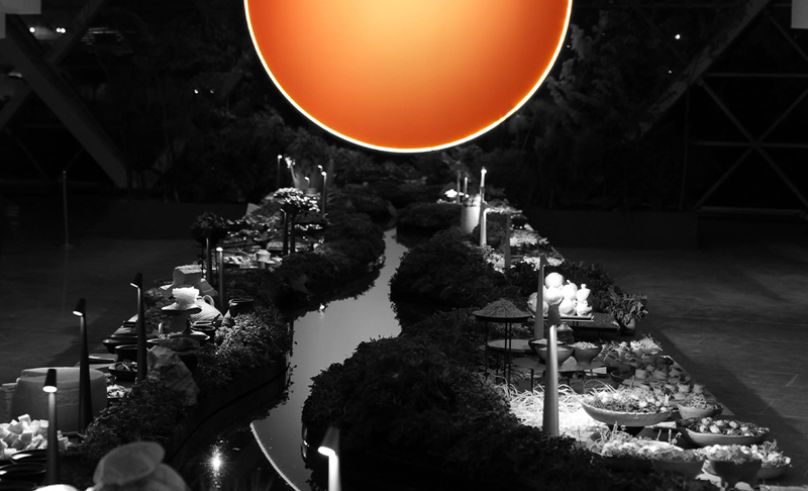 In practice, the festival functions as a kind of culinary cartography. Its feasts are maps, charting connections between food and memory, appetite and history. Over three years, Cairo Food Week has brought together an international roster of chefs alongside Egypt’s own, situating their work across suburbia, the city’s historic core, and its monumental institutions. Each edition of the King’s Feast has turned to Egypt’s wider narrative for direction — and this year was no different.
In practice, the festival functions as a kind of culinary cartography. Its feasts are maps, charting connections between food and memory, appetite and history. Over three years, Cairo Food Week has brought together an international roster of chefs alongside Egypt’s own, situating their work across suburbia, the city’s historic core, and its monumental institutions. Each edition of the King’s Feast has turned to Egypt’s wider narrative for direction — and this year was no different.
- Previous Article Shahid Launches New Campaign Starring ‘Mandoob El Saytara’
- Next Article Six Unexpected Natural Wonders to Explore in Egypt
Trending This Week
-
Dec 27, 2025
-
Dec 23, 2025


